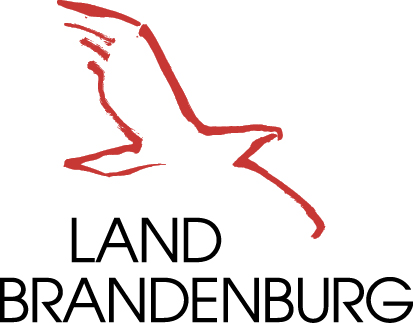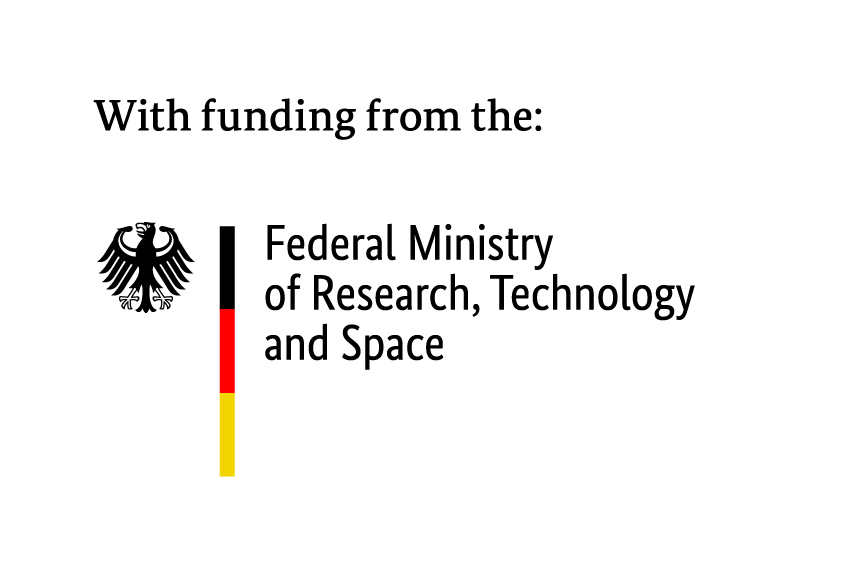Current Projects


Upgrade of a low-energy electron microscope for the optimization of sustainable catalyst and sensor materials
Brief description:
The project aims to strengthen the materials research infrastructure for innovative applications in the fields of »Power to X (to Power)«, microelectronics, and sensor technology.
To this end, an existing low-energy electron microscope (LEEM) is to be upgraded, with the additional components enabling a significant improvement in spatial and temporal resolution and investigations under a gas atmosphere.
Once commissioned, a system will be available that will broaden the basis for application-oriented and fundamental research topics in the fields of surface physics and thin-film technology with regard to the above-mentioned areas of application.
The studies made possible will provide important insights into fundamental processes (e.g., real-time growth processes of catalyst or sensor materials, but also their spatially resolved interaction with gases) relating to the aforementioned fields of application and will therefore contribute significantly to increasing efficiency and optimization within these fields.
Project manager:
Prof. Dr. rer. nat. habil. Jan Ingo Flege
Duration:
24.07.2025 - 39.09.2027 (Grant period)
24.07.2025 - 31.12.2026 (Execution period)
Index of advancement:
86006165
Promotional institution:
Brandenburgian Ministry of Science, Research and Culture (MWFK) and Brandenburgian Ministry of Agriculture, Food Industry, Environment and Consumer Protection (MLEUV)
Cofinanced by resources of Europaen Regional Development Fund (EFRE)
Promotional programme:
»Innovatioin in Brandenburg - IiB«
Keywords:
Low-energy electron microscopy (LEEM), catalysts, methanation, methanol synthesis, hydrogen sensors
Thermo-physical modelling of oxygen storage in three-way catalysts - Aging
Brief description
The aim this project is to investigate the ageing of fresh catalyst samples with regard to their effect on the oxygen storage capacity, the kinetics of conversion and storage processes, and the underlying thermodynamics of the storage material.
Corresponding measurements are first carried out on a synthesis gas test rig under defined boundary conditions (gas composition, gas quantity and temperature). The information obtained in this way is then analyzed on an engine test bench to determine its validity under realistic conditions (complex gas composition and lambda fluctuation).
The experimental results of both test benches are simulated using kinetic catalyst models, which are based on a parameterization of the samples with regard to their composition and thermodynamics.
This parameterization for samples with different degrees of ageing enables the prediction of the available oxygen storage under different operating conditions and can therefore be used advantageously by industry for future development work.
Cooperation Partner:
- FVV e.V.
Lyoner Str. 18
60528 Frankfurt am Main
(Erstzuwendungsempfänger)
- BTU Cottbus-Senftenberg
Chair of Thermodynamics/Thermal Process Engineering
Prof. Dr.-Ing. Fabian Mauß
Siemens-Halske-Ring 8
03046 Cottbus
- Technische Hochschule Nürnberg Georg Simon Ohm
Institute for Automotive Engineering, H2Ohm Institute
Prof. Dr.-Ing. Georgios Bikas
Kesslerplatz 12
90489 Nürnberg
Duration:
01.07.2025 – 30.06.2025
Index of advancement:
01IF24000N


Promotional institution:
Federal Ministry for Economic Affairs and Energy in the framework of Industrial Collective Research (»Industrielle Gemeinschaftsforschung«, IGF)
Keywords:
Three-way-catalyst, oxygen storage, reaction kinetics, thermodynamics, model parameterization
ReLIB: Characterization of materials from the recycling process of end-of-life Lithium-ion batteries
Brief description
Together with BASF as an industrial partner, four work phases will investigate the extent to which energy-storing material can be extracted from old lithium-ion batteries, processed and reused in new batteries.
Cooperation Partner:
- BASF Schwarzheide
Honorarprof. Dr. rer. nat. Arnd Garsuch
- Department of Chemistry
Humboldt-Universität zu Berlin
Prof. Dr. Philipp Adelhelm
Brook-Taylor-Str. 2
12489 Berlin
- Chair of Physical Chemistry
Brandenburg University of Technology Cottbus-Senftenberg
Prof. Dr. rer. nat. habil. Jörg Acker
Universitätsplatz 1
01968 Senftenberg
- Chair of Technical Chemistry
Brandenburg University of Technology Cottbus-Senftenberg
Prof. Dr. rer. nat. habil. Olaf Klepel
Universitätsplatz 1
01968 Senftenberg
- Technical Electrochemistry
Brandenburg University of Technology Cottbus-Senftenberg
Honorarprof. Dr. rer. nat. Arnd Garsuch
Universitätsplatz 1
01968 Senftenberg
Project manager:
Prof. Dr. rer. nat. habil. Jörg Acker
Duration:
01.01.2025 – 30.06.2026
Financial Promotion:
Joint project competition of Humboldt-Universität zu Berlin and Brandenburg University of Technology Cottbus-Senftenberg to identify potentials for cooperation along the Berlin-Berlin-Adlershof-Cottbus innovation axis
Keywords:
Lithium-ion batteries, recycling
Further information:
- Press release 2nd workshop (27.11.2024)
XProLas: Collaborative project: Application of laser-driven X-ray sources in production monitoring and analyticsSubproject: »2D X-ray absorption spectroscopy in the laboratory«
Brief description
Integrating X-ray microscopy (XCT) and X-ray absorption spectroscopy (XAS) results in a spatially resolved microspectroscopic technique that traditionally requires a tunable synchrotron radiation source. In our subproject within the XProLas framework, we will develop a combined n-XCT/2D-XAS in close collaboration with PVA Technology Hub GmbH. As part of this collaborative academia-industry project, we will address this challenge by integrating a laser-induced X-ray source.
We will explore novel battery and catalyst materials as reference systems, including time-resolved charging and discharging processes in batteries observable with a spatial resolution of ≤1 µm. These studies will significantly enhance our understanding of aging mechanisms in battery cells, aiding their optimization and potentially leading to the development of new battery types. We also expect similar insights regarding the aging processes in catalysts, where oxidation or reduction processes occur alongside material transport.
Cooperation Partner:
- Viscom SE (Hannover)
- BRUKER AXS GmbH (Karlsruhe)
- Ushio Germany GmbH (Steinhöring)
- TRUMPF Laser SE (Schramberg)
- Active Fiber Systems GmbH (Jena)
- Amphos GmbH (Herzogenrath)
- Fraunhofer-Gesellschaft zur Förderung der angewandten Forschung e.V. (München), Leibniz Universität Hannover
- PVA Technology Hub GmbH (Wettenberg)
Project manager:
Prof. Dr. rer. nat. habil. Jan Ingo Flege
Duration:
01.01.2024 – 30.11.2027
Index of advancement:
13N16663

Promotional institution:
Federal Ministry of Research, Technology and Space (BMFTR)
Funding Programm:
Neuartige photonische Werkzeuge für Wirtschaft und Gesellschaft – Laserbasierte Hochenergie-Strahlquellen
Keywords:
Lab-based X-ray absorption spectroscopy, laser-induced X-ray sources, microspectroscop
Enhancing Gas Sensing Properties in WOx-CeOy Heterostructures through Surface and Interface Engineering
Brief description:
The project aims to develop a description of the mechanisms that determine the properties of sensors, especially in the context of hybrid structures. Particularly, the scientific goal of the project will be demonstrated through the utilization of the WOx-CeOy bilayer sensing system. The main focus is placed on elucidating the role of the interface between two sensing materials and understanding how the response mechanism is intricately linked to its properties. This involves in-depth in-situ and operando studies.
An additional key aspect of our scientific goal involves investigating the influence of diversifying the sensor's active area on the gas detection process. This exploration is pivotal for understanding and potentially manipulating the diffusion process of gas molecules reacting with the sensor material. The insights into the role and properties of the interface in hybrid structures will enable precise adjustments of gas sensor response and selectivity for desired gases, surpassing the capabilities offered by individual metal oxide materials.
The use of two different yet compatible microelectronic technologies for oxide layer deposition (magnetron sputtering and atomic layer deposition) will be demonstrated. This unique combination provides thorough coverage of the WOx layer and forming WOx-CeOy heterostructure for sensing applications.
A key aspect of our approach is the novel use of the atomic layer deposition method accompanied by operando growth control via spectroscopic ellipsometry, optical reflectance microscopy, and mass spectrometry for synthesizing ultrathin CeOy layers. The use of advanced in-situ spectroscopic techniques will allow to address the intricate interaction of selected gases (hydrogen, ammonia, acetone, carbon dioxide) with the surface of the fabricated samples, providing a comprehensive understanding of the sensing mechanism.
Cooperation Partner:
- Prof. Dr.-Ing. habil. Jarosław Krzysztof Domaradzki
Wroclaw University of Science and Technology
Faculty of Electronics, Photonics and Microsystems
Chair of Microelectronics and Nanotechnology
Wybrzeże S. Wyspiańskiego 27
50-370 Wrocław, Poland
Project manager:
Prof. Dr. rer. nat. habil. Jan Ingo Flege
Duration:
16.01.2025-15.01.2028
Index of advancement:
FL 548/16-1
Project number:
544815996 (GEPRIS)

Promotional institution:
German Research Foundation (DFG)
Keywords:
gas sensor, detection mechanism, heterostructure, metal oxides, magnetron sputtering, thin films
Synergistically application of electronic structure engineering and microstructure engineering for development of cobalt-free high voltage cathodes for Na-ion batteries
Brief description:
The market of Li-ion batteries is currently the most dynamically growing field of electrical energy storage. Since resources of lithium and cobalt are limited, Co-free and Li-free Na-ion batteries have been recognized as potential candidates for next-generation rechargeable batteries. The project presents a unique approach called “electronic and microstructure engineering” in the development of high voltage Na2M2(SO4)3 (M = Fe, Mn, Ni…) cathode material for Na-ion batteries. Thereby, a green method of synthesis of Na2M2(SO4)3 will be used leading to a significantly reduced impurity level (3 wt.%) and a high Fe3+/Fe2+ redox potential. Such high potential combined with large capacity for sodium intercalation leads to a high theoretical energy density that is competitive with Li-ion analogues.
The project combines interdisciplinary research areas of chemistry, physics, solid state electrochemistry, and DFT computer modeling to elucidate the role of the cathode material or the nanoscale Na2M2(SO4)3/carbon composite to optimize its chemical composition, morphology, structural and transport properties as well as synthesis processes, and control the electrochemical battery processes.
Understanding the relationship between crystal and electronic structure, valence states, transport properties and reactivity with respect to sodium will be an important tool for designing a high efficiency of the sodium intercalation process and consequently high battery performance and reliability.
The materials’ morphology is a crucial factor in designing high-performance electrochemical systems. A tailored 3D microstructure development of the cathode requires a quantitative determination of 3D parameters such as permeability, tortuosity (interconnectivity of pores) and fluid-dynamic behavior, which are major parameters for batteries that have to be optimized. A novel transmission X-ray microscope for a wide range of photon energies combined with a chamber for electrochemical processes will enable non-destructive high-resolution operando imaging of kinetic processes to correlate battery performance with the microstructure of composite cathode materials.
Cooperation Partner:
- Prof. Dr.-Ing. habil. Janina Maria Molenda
AGH University of Science and Technology
Faculty of Energy and Fuels
al. A. Mickiewicza 30,
30-059 Kraków, małopolskie, Poland
Project manager:
Honorarprofessor Dr. rer. nat. habil. Ehrenfried Zschech
Duration:
15.10.2023-14.10.2026
Index of advancement:
ZS 12/23-1
Project number:
504885810 (GEPRIS)

Promotional institution:
German Research Foundation (DFG)
Keywords:
polyanion compounds, cathode material, Na-ion batteries, intercalation process
MOVPE growth and characterization of (AlxGa1-x)2O3 thin films for high power devices
Brief description:
Beta-type gallium oxide (β-Ga2O3) provides promising perspectives for high-power applications outperforming current key technology because for β-Ga2O3 a considerably stronger electrical breakdown field is predicted. In addition, it offers potentially low cost and large substrate size preparation from bulk crystals with controllable n-type doping in comparison to other promising materials. The performance of high-power devices directly depends on the breakdown field to the power of three as well as on the mobility of the charge carriers. The incorporation of aluminum into β-Ga2O3 allows tuning the band gap and consequently the breakdown field. Therefore, a suitable material growth method is required resulting in high-quality binary oxide thin films with optimized band gap and uncompromised materials properties.
Hence, in this project we propose to develop a novel approach based on metal-organic vapor phase epitaxy (MOVPE) of β-(AlxGa1-x)2O3 (AlGaO) thin films on lattice-matched (100)-oriented β-Ga2O3 enabling the growth at temperatures above 800°C with an enhanced solubility of aluminum in β-Ga2O3. For this purpose, we will initially grow bulk aluminum-doped β-Ga2O3 single crystals exhibiting a minimal lattice mismatch with the targeted AlGaO films. Subsequently, the quasi-homoepitaxial growth of high-quality AlGaO thin films on these substrates by MOVPE will be engineered and optimized thanks to the detailed insights from sophisticated materials characterization. Our concerted, systematic use of atomic force, electron, and photoemission microscopy, in situ x-ray and electron diffraction, spectroscopic ellipsometry as well as photoelectron spectroscopy techniques will facilitate to unravel the growth mode, morphology, composition as well as the structural, electronic, electrical, and optical properties of the AlGaO thin films.
Specifically, we will determine the limiting factors for Al distribution and its maximally possible incorporation into β-Ga2O3 without phase separation. Then, we will explore the possibilities for band gap and strain engineering in the AlGaO system, investigate the surface morphology as well as the interface of the AlGaO on β-Ga2O3 system, and perform electrical and structural analysis to understand the process of defect formation and the role of impurities.
Our strategy is threefold: (1) preparation of epitaxy-ready aluminum-doped (up to 15%) bulk β-Ga2O3 crystals (2 cm to 2 inches in diameter) as substrates for the subsequent quasi-homoepitaxial growth of AlGaO thin layers and characterization of the obtained films to (2) optimize the growth and to (3) evaluate the application-relevant properties. Particularly, the project focuses on the preparation and characterization of epitaxial AlGaO with maximum aluminum incorporation resulting in the highest possible increase of the band gap and the breakdown field.
Cooperation Partner:
- Dr. Andreas Popp and Dr. Zbigniew Galazka
Leibniz-Institut für Kristallzüchtung (IKZ)
Abteilung Schichten und Nanostrukturen
Max-Born-Straße 2
12489 Berlin
- Dr. Vedran Vonk
Deutsches Elektronen-Synchrotron (DESY) Standort Hamburg DESY
Research Group X-ray Physics and Nanoscience
DESY Nanolaboratory
Notkestr. 85
D-22607 Hamburg
Project manager:
Prof. Dr. rer. nat. habil. Jan Ingo Flege
Duration:
01.01.2023-31.12.2025
Index of advancement:
FL 548/13-1
Project number:
491040331 (GEPRIS)

Promotional institution:
German Research Foundation (DFG)
Keywords:
gallium oxide, metal-organic vapor phase epitaxy, materials characterization, photoelectron spectroscopy, X-ray diffraction
Innovation campus electronics and microsensing Cottbus - iCampus2Topic: »Environmental Sensors«; Subproject: »Sensor technology for fluid fuels«
Brief description
In the context of the energy transition, Lusatia as a traditional energy region is structurally changing from a coal-mining region to a model region for the hydrogen strategy, with (carbon) hydrocarbons (synthetic fuels) as important energy carriers of the future for stationary and mobile applications. This creates an enormous demand for powerful sensors for safety-related monitoring during transport and storage of the fluid fuels as well as their use by the end customer.
The goal of this subproject is a combined sensor array based on the merging of two technologies (IHP, IPMS) for the future synchronous detection of hydrogen and hydrocarbons, which is self-calibrating and can be coupled to existing sensor networks.
To this end, the sensor concepts for resistive and optical silicon-based sensors developed in the first phase of iCampµs will initially be consolidated in the second phase through design and material optimization steps. In parallel, the technological approaches for the realization of matrix arrangements will first be created, which in perspective will form the basis on the one hand for the connection of several sensors (e.g. electronic noses) and on the other hand for intelligent signal processing. Subsequently, the two sensor principles are to be merged into a CMOS-compatible platform, including a digital interface with generic functionality. In the process, a configurable multi-purpose platform for signal and data processing with the ability to interface to standard wired and wireless industrial networks and to a 5G standard platform will be developed.
Cooperation Partner:
- Chair of Experimental Physics and functional Materials
Brandenburg University of Technology Cottbus - Senftenberg
Prof. Dr. rer. nat. habil. Inga Fischer
Erich-Weinert-Straße 1
03046 Cottbus
Chair of Micro and nano systems
Brandenburg University of Technology Cottbus - Senftenberg
Prof. Dr.-Ing. Dr. rer. nat. habil. Harald Schenk
Konrad-Zuse-Straße 1
D-03046 Cottbus- IHP GmbH – Leibniz Institut für innovative Mikroelektronik
Prof. Dr. rer. nat. habil. Christian Wenger
Im Technologiepark 25
15236 Frankfurt (Oder)
- Fraunhofer Institute for Photonic Microsystems (IPMS)
Institute section »Integrated Silicon Systems«
Dr. Sebastian Meyer
Konrad-Zuse-Straße 1
03046 Cottbus
- Chair of Computer Engineering
Brandenburg University of Technology Cottbus - Senftenberg
Prof. Dr.-Ing. Michael Hübner
(Dr.-Ing. Marc Reichenbach, Substitute Professor)
Konrad-Wachsmann-Allee 5
03046 Cottbus
Project manager:
Prof. Dr. rer. nat. habil. Jan Ingo Flege
Duration:
01.01.2022 – 31.12.2026
Index of advancement:
16ME0420K

Promotional institution:
Federal Ministry Research, Technology and Space (BMFTR)
within the German Federal Government’s Framework Programme for Research and Innovation 2021–2024
»Microelectronics. Trustworthy and sustainable. For Germany and Europe.«
Keywords:
gas sensors, micro-structering, atomic layer deposition, sensor platform, intelligent signal processing
Further information:
- iCampus hompage
- Kick-Off Meeting iCampμs Cottbus Phase II (Stream)
(Copyright: loewn|logulago GmbH)
Joint project EIZ: Energy Innovation Center of the Brandenburg University of Technology Cottbus-SenftenbergEnergy Storage and Conversion Facility ("ES&EW" Lab)
Brief description (only in German)
Im »ES&EW«-Labor sollen die drei Ebenen für Sektor-gekoppelte Energiesysteme – Wärme, Strom und Mobilität – in einem CO2 neutralen Kreislaufansatz, basierend auf Wasserstoff, abgebildet werden.
Auf allen Ebenen werden dafür die entsprechenden Elemente des Kreislaufansatzes entwickelt und optimiert, beginnend mit der Wasserstoffproduktion in unterschiedlichen Druckstufen und Verfahrenstechniken entsprechend des gewünschten Einsatzes (Hochdruck → Mobilität, Niederdruck → weitere Synthese).
Darauf aufbauend geht es um die Weiterverarbeitung des Wasserstoffs zu den synthetischen Kohlenwasserstoffen Methan und Methanol, sowie deren Rückverstromung im Oxyfuel-Prozess für eine emissionsfreie Rückführung der Abgase, in Form von hochkonzentriertem und reinem CO2, in den Stoffkreislauf.
Dabei wird jede der drei Ebenen in einem verständnisbasierten und simulationsgestützten Entwicklungsprozess im engen Austausch mit den EIZ-Einrichtungen EECON, DIVERSY, Scale-Up Lab, MoWes und SCL, für den Einsatz im Kreislaufsystem optimiert und weiterentwickelt.
In dem neu aufzubauenden »ES&EW«-Labor wird mit fortschrittlicher Messtechnik eine detaillierte Charakterisierung der Materialien, Komponenten und Prozessführung sowie die Optimierung ihres Zusammenspiels angestrebt.
Dazu wird aufbauend auf detaillierten experimentellen Analysen eine neuartige modellbasierte Simulations- und Optimierungsplattform entwickelt, die eine umfangreiche Prototypenvalidierung im frühen Entwicklungszeitraum ermöglicht.
Cooperation Partner:
- Chair of Thermal Energy Technology
Brandenburg University of Technology
Prof. Dr. rer. nat. Lars Röntzsch
Siemens-Halske-Ring 13
03046 Cottbus
Chair of Ccombustion Engines and Flight Propulsion
Brandenburg University of Technology
Prof. Dr.-Ing. Heinz Peter Berg
Siemens-Halske-Ring 14
03046 Cottbus- Chair of Thermodynamics/Thermal Process Engineering
Brandenburg University of Technology
Prof. Dr.-Ing. Fabian Mauß
Siemens-Halske-Ring 8
03046 Cottbus
Project manager:
Prof. Dr. rer. nat. habil. Jan Ingo Flege
Fabian Rachow
Duration:
01.08.2022 – 31.07.2026
Index of advancement:
03SF0693A

Promotional institution:
Federal Ministry of Research, Technology and Space (BMFTR)
Funds of BMFRT and funds for measures to strenghten the coal region
Keywords:
Sector coupling, CO2-free circular economy, synthetic fuels
Lab infrastructure for the Energy Innovation Center of the Brandenburg University of Technology Cottbus-SenftenbergEnergy Storage and Conversion Facility (»ES&EW« Lab)
Brief description
Within the framework of this project, the infrastructural requirements for the »ES&EW« laboratory are being created.
Cooperation Partner:
- Chair of Thermal Energy Technology
Brandenburg University of Technology
Prof. Dr. rer. nat. Lars Röntzsch
Siemens-Halske-Ring 13
03046 Cottbus
Chair of Ccombustion Engines and Flight Propulsion
Brandenburg University of Technology
Prof. Dr.-Ing. Heinz Peter Berg
Siemens-Halske-Ring 14
03046 Cottbus- Chair of Thermodynamics/Thermal Process Engineering
Brandenburg University of Technology
Prof. Dr.-Ing. Fabian Mauß
Siemens-Halske-Ring 8
03046 Cottbus
Project manager:
Prof. Dr. rer. nat. habil. Jan Ingo Flege
Fabian Rachow
Duration:
29.09.2022 – 30.06.2026
Index of advancement:
85056897
Promotional institution:
This project is supported by the federal government with funds from the Coal Regions Investment Act and co-financed with funds from the state of Brandenburg.
Further information:


